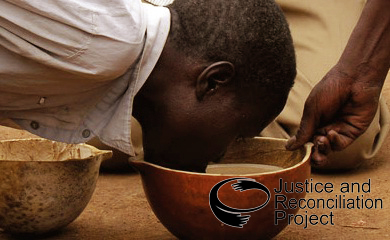Evelyn Amony and Olive Ederu
IN 2008, THE GOVERNMENT of Uganda and the Lord’s Resistance Army signed the annex to the principal Agreement of the Juba Peace Agreement on accountability and reconciliation which elaborates how perpetrators should be held accountable for crimes committed during the conflict. In line with this, the Government of Uganda established the International Crimes Division of the High Court to try individuals accused of committing war crimes, crimes of genocide, terrorism and crimes against humanity. The Court fired into action in 2011 by opening the trial of Thomas Kwoyelo who was charged with war crimes and crimes against humanity.
During a dialogue held by the Gender Justice Department at JRP with the Women’s Advocacy Network (WAN) on prosecution as a transitional justice mechanism in September 2012, the women members presented a number of cross cutting issues which premise on the effectiveness of prosecution in delivering the desired justice and reconciliation. As much as accountability for crimes committed during conflict has been welcomed by women survivors, the lingering question has been whether all the “perpetrators” will be investigated and subsequently prosecuted.
The conflict in northern Uganda produced three categories of survivors: the formerly abducted and the formerly displaced or a combination of the two. While many women who were abducted were widely believed to have been violated (raped, forced into marriage or sexual slavery among other violations) by the LRA, those who were who were forced into internally displaced persons camps during the war also endured sexual violations at the hands of their supposed protectors, the Government soldiers and a few by the rebel forces. An example is Adong (not her real name) who after her abduction was forced to become a wife to an LRA commander. She lived in captivity for three years and begot two children. Upon her return, she was forcefully taken by a Government soldier and forced to marry him. The soldier even threatened to shoot Adong’s mother if she objected and went as far as criticising the locals for “freely” giving out the daughters to the LRA and not the Uganda People’s Defence Force. Many girls who escaped from captivity were tortured and raped by the Government soldiers after their “rescue”.
Yet another tale is told of one of the Aboke girls who after being shot on the leg sought refuge from the UPDF who instead raped her to death. In other quarters, men have opened up and given chilling testimonies of being sodomised by UPDF soldiers. The people of Atiak will never forget the day a commander of the UPDF stormed the market on auction day and demanded the people to give up the relatives of LRA commander Otti Vincent. When the people refused to comply he coughed as a sign for his troops to fire. What happened in the next minutes can only be described as a scene in a horror movie with the soldiers firing indiscriminately at the people with bullets and killing about 200 that day. A young girl at the time described the scene:
The soldiers begun shooting randomly at the women and they started falling down. I was hidden under a bale of clothes. It was my first time to see a dead body. The women seemed to be sleeping but blood oozed from them.
Such are but a few examples of experiences of the many who suffered violations from both warring parties.
A perpetrator turned dispenser of justice
Another issue is that many perceive current transitional justice mechanisms as reflecting a scenario where the perpetrator has turned prosecutor and dispenser of justice. Government soldiers allegedly committed atrocities and therefore to have the same institution championing prosecution seems to many to be a mockery of justice. The fear is that the targeting LRA Commanders reflects a level of impartiality which is undesirable. The scenario can best be expressed by the saying “nobody can prick his or her own eyes”.
Related to this is the aspect of witness protection. Fear of losing one’s life and that of immediate family following testimonies for or against an accused continue to linger in the minds of potential witnesses, this coupled with the risk of having the prosecutorial guns turned on a witness (though the later has been somewhat dispelled by grant of certificates of amnesty) raise pertinent issues and show the challenges that lie ahead in accomplishing the objectives of accountability for past violations through prosecution. It is a rule of thumb that for a mechanism to succeed it requires local support and participation thereof and since prospective witnesses are usually the local population if they refuse to testify in cases and cut tail the whole agenda.
From the above excerpts, to beat the drum of accountability by way of prosecuting the alleged “perpetrators” while targeting one party and ignoring the other by no means results into meaningful justice. If proper accountability is to be achieved, then both the LRA and the UPDF commanders should face trial at the ICC or the ICD in order for the weighing scales of justice to balance. The other side of the coin should be flipped, otherwise we may never know what lies beneath and past events may never be resolved.

